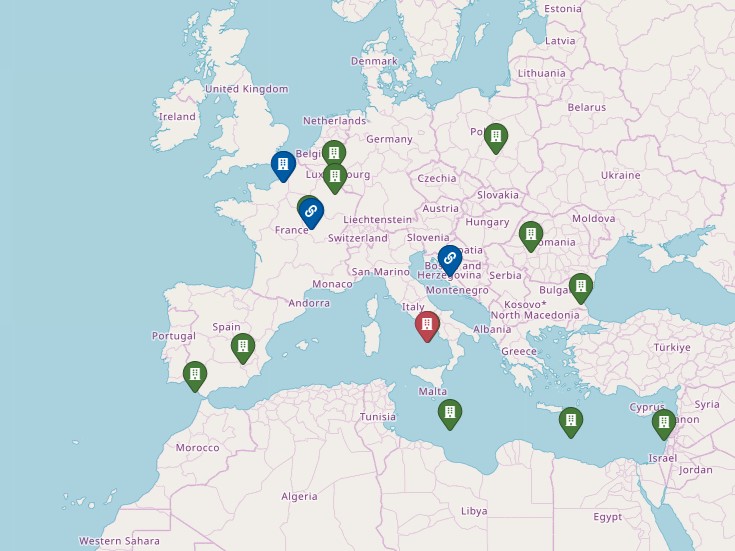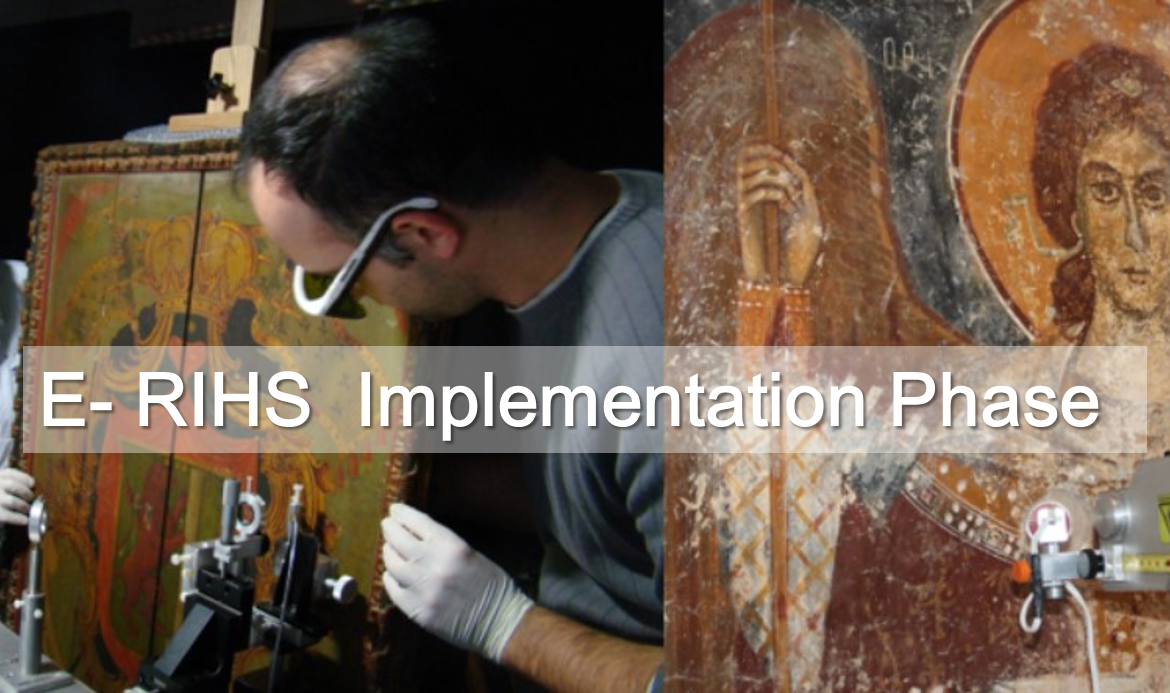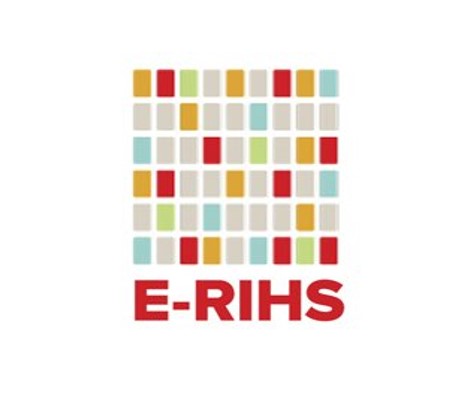E-RIHS IP- EUROPEAN RESEARCH INFRASTRUCTURE FOR HERITAGE SCIENCE IMPLEMENTATION PHASE
1 October 2022 to 30 September 2024
Project No: GA 101079148, Co-ordinator: D. Anglos, P.Pouli and S. Sotiropoulou
The European Research Infrastructure for Heritage Science (E-RIHS) was designed as a pan-European distributed infrastructure with the vision of replacing the traditional science-for-art approach to conservation through the new widely interdisciplinary sector of Heritage Science (HS) to improve the understanding and sustainable preservation of cultural heritage. E-RIHS was admitted in the 2016 ESFRI Roadmap and is now preparing its step 2 application to take the legal form of an ERIC. The E-RIHS Implementation Phase (E-RIHS IP) consortium brings together representatives of the national nodes of the countries that expressed their willingness to support the establishment of the ERIC and one permanent observer. It aims at enabling the E-RIHS implementation phase and preparing the operation of E-RIHS ERIC, also in support of its positioning as the reference RI for the HS domain at the EU and global level. The objectives and methodology underpinning the E-RIHS IP work plan target and intend to overcome the bottlenecks highlighted in the recommendations of the 2020 ESFRI monitoring report, the EC High Level Expert Group report (2020) and the ERIC step 1 assessment (2021). Coordinated actions are dedicated to: (i) implement the E-RIHS governance structure and finalise its distributed architecture; (ii) support the E-RIHS management with strategies and related implementation plans regarding HR, procurement, risk management and quality system; (iii) maintain and build upon the established E-RIHS excellence in user access and foster FAIR open access with the design of the DIGILAB platform; (iv) strengthen international cooperation, cultivate synergies and consolidate the HS community around E-RIHS, while establishing E-RIHS in the landscape of EU RIs and global initiatives; (v) secure the ERIC sustainability and unlock its socioeconomic impact potential by providing E-RIHS with an updated business plan and a marketing strategy tailored for its new lifecycle phase.
The main objective of the European Research Infrastructure for Heritage Science Implementation Phase (E-RIHS IP) project is to enable E-RIHS ERIC (E-RIHS) to start its operation phase and position itself as a reference for excellent research for the wide interdisciplinary community of heritage science.
The specific objectives of E-RIHS IP are thus meant to fill critical gaps and tackle strategic challenges in order to enhance the E-RIHS performance with respect to the benchmarks used by the evaluators. In other words, by stocktaking the recommendations of the reports, E-RIHS IP works towards raising the evaluation grades from medium to high and from high to very high at the time of the next assessment. Having the recommendation of the reports in mind, the E-RIHS IP
project has been tuned to specific, realistic and achievable objectives. They are listed below together with the coordination and support activities to achieve their successful implementation:
(1) to implement the governance structure of E-RIHS as detailed in the E-RIHS Statutes and Scientific and Technical Description;
(2) to finalise the distributed architecture of E-RIHS by providing efficient coordinated operations between the Central Hub and the distributed facilities of the National Nodes, and by fostering the establishment of appropriate legal forms at the national level also preparing the formal interaction of the National Nodes with the future ERIC;
3) to provide E-RIHS with a thorough risk inventory and mitigation plan considering the highlighted critical aspects, such as governance and organisation, funding and technical development;
(4) to maintain and build upon the established E-RIHS excellence in user access by providing an attractive portfolio of services while preparing the plan for implementing the DIGILAB platform;
(5) to foster E-RIHS readiness for EOSC and FAIR data, while implementing the DIGILAB platform;
(6) to strengthen the E-RIHS international cooperation by consolidating the global presence of E-RIHS;
(7) to cultivate synergies across the ESFRI landscape and with other EU and international initiatives by developing joint strategies to be periodically assessed;
(8) to consolidate the HS community around E-RIHS as a recognized hub of research excellence and innovation incubator by engaging with new communities and stakeholders;
(9) to secure financial viability through harmonised membership fees and in-kind contribution accounting while enlarging the E-RIHS membership;
(10) to unlock the socioeconomic potential of E-RIHS by developing sound measurable strategies for engaging stakeholders and enhancing public awareness; and by exploiting the innovation capacity of the RI for cultural and creative industries;
(11) to provide E-RIHS with a business plan tailored for its new lifecycle phase, also including considerations on alternative funding mechanisms.

PROJECT PARTNERS:
- Coordinator Consiglio Nazionale delle Ricerche CNR IT-Italy
- Koninklijk Instituut voor het Kunstpatrimonium KIK-IRPA BE-Belgium
- Fondation des Sciences du Patrimoine FSP FR-France
- Affiliated Centre National de la Recherche Scientifique CNRS-FSP FR-France
- Affiliated Ministère de la Culture et de la Communication MCC-FSP FR-France
- Foundation for Research and Technology Hellas FORTH GR-Greece
- Atommagkutató Intézet ATOMKI HU-Hungary
- L-Università ta’ Malta UM MT-Malta
- Ministerie van Onderwijs, Cultuur en WetenschapRijksdienst voor het Cultureel Erfgoed RCE NL-The Netherlands
- Uniwersytet Mikolaja Kopernika W Toruniu NCU PL-Poland
- Universidade de Evora HERCULES PT-Portugal
- Institutul Național de Cercetare-Dezvoltare pentru Optoelectronică – INOE 2000 INOE RO-Romania
- Javni Zavod Republike Slovenije Za Varstvo Kulturne Dediščine ZVKDS SI-Slovenia
- Affiliated Univerza v Ljubljani UL-ZVKDS SI-Slovenia
- Agencia Estatal Consejo Superior de Investigaciones Científicas CSIC ES-Spain
- University College London UCL UK-United Kingdom
- Affiliated The National Gallery NG-UCL UK-United Kingdom
- The Cyprus Institute CYI CY-Cyprus
- International Centre for the Study of the Preservation and Restoration of Cultural Property ICCROM IT-Italy
Funding

IPERION IP is a project funded by the European Union, HORIZON-INFRA-2021-DEV-02, under GA No. 101079148. Views and opinions expressed are however those of the authors only and do not necessarily reflect those of the European Union. Neither the European Union can be held responsible for them.
The contents of the website reflect only the author’s view and the Agency and the European Commission is not responsible for any use that may be made of the information it contains.



